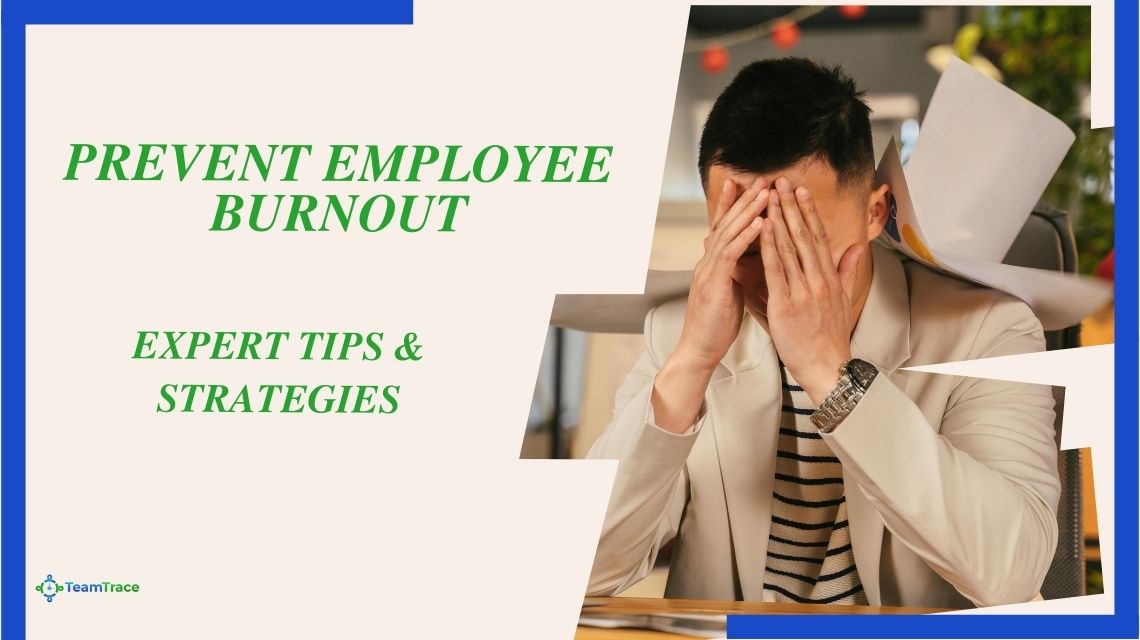Employee burnout is much more than just feeling stressed at work. It is a state of chronic physical and mental exhaustion that can occur when employees feel overwhelmed and unsupported from their roles. So, it isn’t just limited to fatigue. It manifests as a prolonged response to stress, where an employee’s motivation, energy, and performance dwindle, ultimately leading to disengagement and decline in health.
At its core, employee burnout stems from an environment where the demands of the job far outweigh the resources and support available to employees. This imbalance, in both global enterprises and startups, creates a huge burnout storm. The fast-moving, all-hands-on deck culture can push employees past their limits without offering adequate recovery time.
Employee burnout doesn’t happen overnight. It emanates from a combination of internal and external factors. The causes of employee burnout typically fall into three main categories:
1. Personality Factors
Some individuals are more prone to burnout due to their personality traits. Over-achievers, perfectionists, and pessimists are particularly vulnerable. These employees often push themselves to the limit, setting high expectations and refusing to acknowledge their limits.
- Over-achievers tend to take on too much, believing they need to perform at an exceptionally high level all the time. The constant drive to do more can quickly lead to exhaustion and burnout.
- Perfectionists are often critical of their own work, fearing that anything less than flawless is unacceptable. This fear of failure or inadequacy can cause them to overwork and stress themselves out in the pursuit of perfection.
- Pessimists, on the other hand, may have a negative outlook on their work and the workplace environment, leading them to become disengaged, unmotivated, and ultimately burnt out.
2. Poor Work-life Balance
A poor work-life balance is one of the most common causes of employee burnout. When work seeps into personal time or personal issues begin to affect work, the pressure builds up, ultimately leading to burnout.
- Work Occupying Personal Life: When employees feel that work never ends- whether due to long hours, constant emails, or the expectation to be always available-this can lead to severe stress and exhaustion. Employees who feel they are never “off the clock” may struggle to unwind and recharge, making it difficult to maintain their productivity and well-being.
- Personal Life Affecting Work: Conversely, when personal issues or responsibilities affect an employee’s ability to focus and perform, it can create stress that carries over into work. The struggle to juggle competing demands leads to a sense of being overwhelmed, contributing to burnout.
3. Work-related Stress
Several factors contribute to work-related stress, and it stands as one of the most prevalent causes of employee burnout.
- Excessive Workload: When employees face an unmanageable workload with little relief, burnout becomes almost inevitable. The feeling of constantly being behind or under pressure can create anxiety and stress, which can take a significant toll on mental and physical health.
- Increased Job Demands without Commensurate Benefits: In many cases, job demands increase without offering employees additional support, compensation, or recognition. This imbalance can lead to feelings of frustration and resentment, which fuels burnout.
- Lack of Recognition or Feedback: Employees who don’t receive regular feedback or acknowledgment of their hard work may start to feel that their efforts are in vain. Without recognition, the motivation to continue performing at a high level diminishes, and burnout ensues.
- Loss of Faith in Leadership: When employees feel that their leaders are disconnected from their needs, uninspiring, or ineffective, it leads to a lack of trust and engagement. This can significantly contribute to burnout, as employees become disengaged and feel unsupported in their roles.
No wonder why dealing with employee burnout has emerged to be crucial. It’s essential for organizations to create a work environment where employees feel valued, heard, and properly compensated for their efforts.
On November 8, 2024, TeamTrace hosted its first-ever webinar, “Strategies for Managing Employee Burnout,” drawing a diverse group of HR professionals, business leaders, and decision-makers.
Webinar Overview
The expert panel at TeamTrace offered valuable insights on preventing and managing burnout.
- Vaibhav Jain, Founder of SavePro Financial Services, stressed the importance of identifying burnout early and its financial impact on businesses. He shared actionable strategies to create a people-first culture that prevents burnout from escalating.
- Dr. Mohita Srivastava, Neuroscientist and Founder of Cognitome LLC, explained the neuroscience behind burnout and the role of mental health programs and mindfulness in combating it.
- Daman Dhiman, Head of Operations at OneMission Media, tackled the challenges of remote and hybrid work and shared strategies for maintaining clear boundaries between work and personal life.
- Anjishnu Pramanik, Senior Project Manager at Sonora, debunked common burnout myths and offered advice on building resilience to help employees recover and thrive.
Key Strategies Discussed
The webinar provided actionable strategies to tackle burnout in the workplace:
- Early Intervention: Recognize burnout signs early to prevent escalation.
- People-First Culture: Build a supportive culture where employees feel valued.
- Mental Health Programs: Offer stress management and mindfulness initiatives to support employees’ well-being.
- Work-Life Balance: Maintain clear boundaries, especially for remote and hybrid teams, to avoid burnout.
- Resilience Training: Equip employees with tools to manage stress and bounce back from setbacks.
Increased organizational strain and extended work hours impact employees hugely. They become the shock absorbers, and in turn, are left drained out. Spotting the early signs of burnout is crucial to eradicate it at its very root.
1. Reduced Motivation
Burnt-out employees show a decline in motivation, manifesting in tardiness, missed deadlines, skipped meetings, or avoiding breaks. In remote or hybrid settings, detecting these signs is more challenging due to limited face-to-face interaction.
2. Increased Irritability
Work-related stress often leads to frustration and irritability. Employees become short-tempered, and early detection of this symptom can help prevent escalation.
3. Incidence of Frequent Errors
Burnout hampers focus and decision-making, leading to frequent mistakes. These errors, if not addressed early, can significantly impact performance.
4. Social Withdrawal
Burnt-out employees withdraw from social and professional interactions. In remote work settings, this behavior may be harder to spot but still affects team cohesion and collaboration.
5. Expression of Cynicism or Negativity
Employees may express doubt about company goals and leadership, leading to disengagement. If ignored, this negativity can harm productivity and morale.
6. Frequent Complaints
Increased complaints about workload, coworkers, or leadership are common burnout signs. Left unaddressed, they can foster negativity and undermine team dynamics.
In a recent report released by the Boston Consulting Group (BCG), it has been revealed that, on average, 48% of workers from eight countries indicate that they are currently struggling with burnout. Its impact is lethal and can have varied dreary consequences.
Increased Absenteeism
Burnout erodes productivity. It impacts how employees show up. Employees facing this challenge are more likely to take extra sick days, not out of illness but to escape the surmounting work pressure. This puts extra stress on teammates, leading to even more burnout in a vicious cycle.
Higher Employee Turnover
When employees reach their breaking point, they often start looking for an escape, whether that’s leaving the organization or shifting roles. High turnover is much more than a business problem. It means parting with talent, relationships, and a sense of continuity, often leaving those behind feeling overburdened. In fact, it also casts an adverse impact on the company reputation as a whole because employees are the spokesperson of an organization in the first place.
Amplified Costs for the Organization
The effects of burnout ripple through the company, often in ways that aren’t immediately visible. Beyond the obvious costs of absenteeism and turnover, burnout leads to lost productivity, lower morale, and diminished performance. This ultimately hits the bottom line—an often silent but powerful reminder that people are a company’s greatest asset.
Reduced Productivity
When employees are burned out, their enthusiasm and energy for the job fade. What once felt like an exciting challenge can quickly become a burdensome task. The result? A noticeable dip in productivity. It’s the overwhelming mental and physical exhaustion that makes even simple tasks feel insurmountable.
Strained Workplace Relationships
Burnout often leads to social withdrawal and irritability, which can sour team dynamics. Colleagues who were once supportive may now seem distant, and collaboration can feel like a chore. This emotional distance affects trust and camaraderie, which are essential for a positive work environment.
Damage to Company Culture
Workplace burnout can degrade the culture of an entire company. As employees become disengaged, frustrated, or cynical, the workplace atmosphere shifts from one of collaboration and positivity to one of disengagement and stress. A once vibrant culture can quickly become toxic, affecting everyone in the organization.
The hazardous consequences of burnout on employees’ physical and mental health are not unknown. But, it also results in expensive implications for the business. Considering the case of the US alone, the cost of absenteeism is $300 billion a year in insurance, employee turnover, and work productivity.
Against such circumstances, the HR department needs to be proactive and take action in figuring out employee burnout causes and cures, while coming up with solutions to prevent it altogether.
1. Flexible Work Hours with Remote Work Options
The rigid 9-to-5 structure doesn’t always fit into everyone’s life, and that’s especially true for employees who are feeling burnt out. By offering flexible work hours and remote work options, HR empowers employees to manage their own schedules and work from a place that suits them best. This helps alleviate stress and gives employees the control they need to maintain a healthier work-life balance.
2. Mental Health Support Programs
Offering access to mental health resources, such as counseling, therapy sessions, or employee assistance programs (EAPs), is one of the most effective ways to support employees. These programs give employees a safe space to talk through their stress, anxieties, and personal challenges.
3. Employee Recognition & Rewards
When employees feel unappreciated, burnout tend to set in faster. HR teams can implement regular recognition programs, be it through small gestures like “Employee of the Month” or larger incentives like bonuses or extra time off. These acts of recognition show employees that their hard work and dedication matter, lifting their spirits and motivating them to continue giving their best.
4. Health & Wellness Programs
Promoting overall health and well-being can reduce the risk of burnout. Offering wellness initiatives such as fitness classes, yoga sessions, meditation breaks, or gym memberships can help employees de-stress and recharge. HRs can create a culture that values not just physical health but also mental and emotional well-being, helping employees feel more balanced and energized.
5. Training for Resilience and Stress Management
Equipping employees with the tools to manage stress through resilience training or workshops focused on time management, coping strategies, and mindfulness may prove to be beneficial. HRs can bring in experts or provide resources that teach employees how to better navigate challenges at work. This empowers individuals to take control of their own well-being, reducing the chances of burnout before it starts.
6. Encouraging Time Off and Proper Breaks
Employees often feel guilty about taking time off, especially when under pressure. HRs can encourage taking regular breaks throughout the day and ensuring employees use their vacation days. Time away from work allows employees to reset, recharge, and return with renewed energy. Encouraging employees to step away from their desks is not just about time off; it’s about respecting their need for mental space to thrive.
Recovering from burnout is a journey that requires the active involvement of both managers and the organization as a whole. When employees feel supported and their holistic needs are met, they are less likely to experience burnout in the first place.
Managers can guide employees through recovery and build a healthier workplace that prevents burnout in the long run by following these tips:
1. Setting Clear & Meaningful Goals
Burnout at work often originates from the feeling of being overly burdened or lacking direction. Managers need to step in and help employees regain a sense of purpose by setting clear, achievable goals that are meaningful to them.
It is crucial to ensure that these goals align with the organization’s mission while also allowing employees to feel a sense of personal accomplishment. When employees have a clear path to success and can see how their work contributes to the larger picture, they’re more likely to stay engaged and energized.
2. Designing Manageable Workloads
Efforts ought to be taken to ensure that roles and workloads are structured in a way that is achievable and balanced. Overloading employees with too many tasks or unrealistic deadlines can quickly lead to burnout.
Further, employees need to have access to adequate time and resources to meet their goals without sacrificing their mental or physical health. Setting realistic expectations and providing the necessary support will help reduce stress and make work feel more manageable.
3. Fostering Teamwork & Shared Accountability
Burnout doesn’t happen owing to any single factor. In most cases, it emerges because of unsustainable workloads or lack of support. To combat this, creating a culture of teamwork and shared responsibility is crucial.
When employees work together, they can support one another, lighten the load, and approach challenges as a team. Shared accountability fosters a sense of camaraderie, where everyone contributes to the success of the project and looks out for each other’s well-being. This sense of connection can reduce feelings of isolation and stress.
4. Welcoming Employee Feedback
Creating an open channel for employees to share feedback is essential for understanding and addressing burnout. Employees who feel their voices are heard are more likely to feel valued and engaged.
Soliciting feedback through surveys, one-on-one meetings, or anonymous channels periodically is essential. This not only helps identify potential burnout risk factors but also shows employees that their opinions matter.
TeamTrace, with its comprehensive suite of tools, offers organizations the ability to actively monitor and manage workloads, ensuring that employees are not overly burdened and that their skills are being used effectively. Here’s how:
1. Effective Resource Management
One of the key contributors to burnout is an imbalance in workload distribution. TeamTrace’s Resource Management Tab allows managers to see in real-time who is overloaded with tasks and who has the bandwidth to take on more. This visibility ensures that workloads are evenly distributed, preventing any employee from feeling pressurized.
2. Real-time Project Management Insights
With TeamTrace’s Project Management Suite, managers gain a real-time overview of project updates, progress, and individual task completions. This ensures that no employee is left struggling with an unmanageable workload. Therefore, managers can track project milestones and identify if a team member is taking on too much responsibility or if someone is underutilized.
3. Optimizing Employee Utilization and Well-being
An underutilized employee can also be at risk of facing anxiety, as lack of engagement and a sense of purpose can lead to dissatisfaction. TeamTrace’s platform helps identify employees who have the bandwidth to take on projects and ensures they are given meaningful work that aligns with their skills and career goals.
1. How to avoid burnout as an employee? To avoid burnout as an employee, it’s essential to set clear boundaries between work and personal life, manage the workload by breaking tasks into manageable steps, and take regular breaks to recharge.
2. How can burnout be prevented? Burnout can be prevented by managing workloads effectively, setting clear boundaries between work and personal life, and taking regular breaks to avoid mental and physical exhaustion. Employees ought to prioritize self-care, stay organized, and communicate openly with managers when feeling stressed.
3. What are the three Rs of burnout? The three Rs of burnout are Recognize, Reverse, and Resilience. To avoid burnout as an employee, first recognize the early signs of stress, such as fatigue or disengagement. Next, reverse burnout by addressing the causes, setting boundaries, managing workloads, and seeking support from managers or peers. Finally, build resilience by practicing self-care, maintaining a healthy work-life balance, and developing coping strategies to manage stress in the long term.
4. How to motivate employees who are burned out? To motivate employees who are burned out, it’s important to offer support, empathy, and understanding. Start by acknowledging their struggles and providing a safe space for open communication. Further, it is important to encourage a manageable workload, set realistic expectations, and offer flexibility where possible.
5. How do you prevent burnout easily? It is essential to focus on maintaining a healthy work-life balance by setting clear boundaries, managing your workload, and taking regular breaks to recharge. Burnout can also be easily prevented by delegating tasks when necessary and practicing stress-relief techniques like exercise or meditation.



